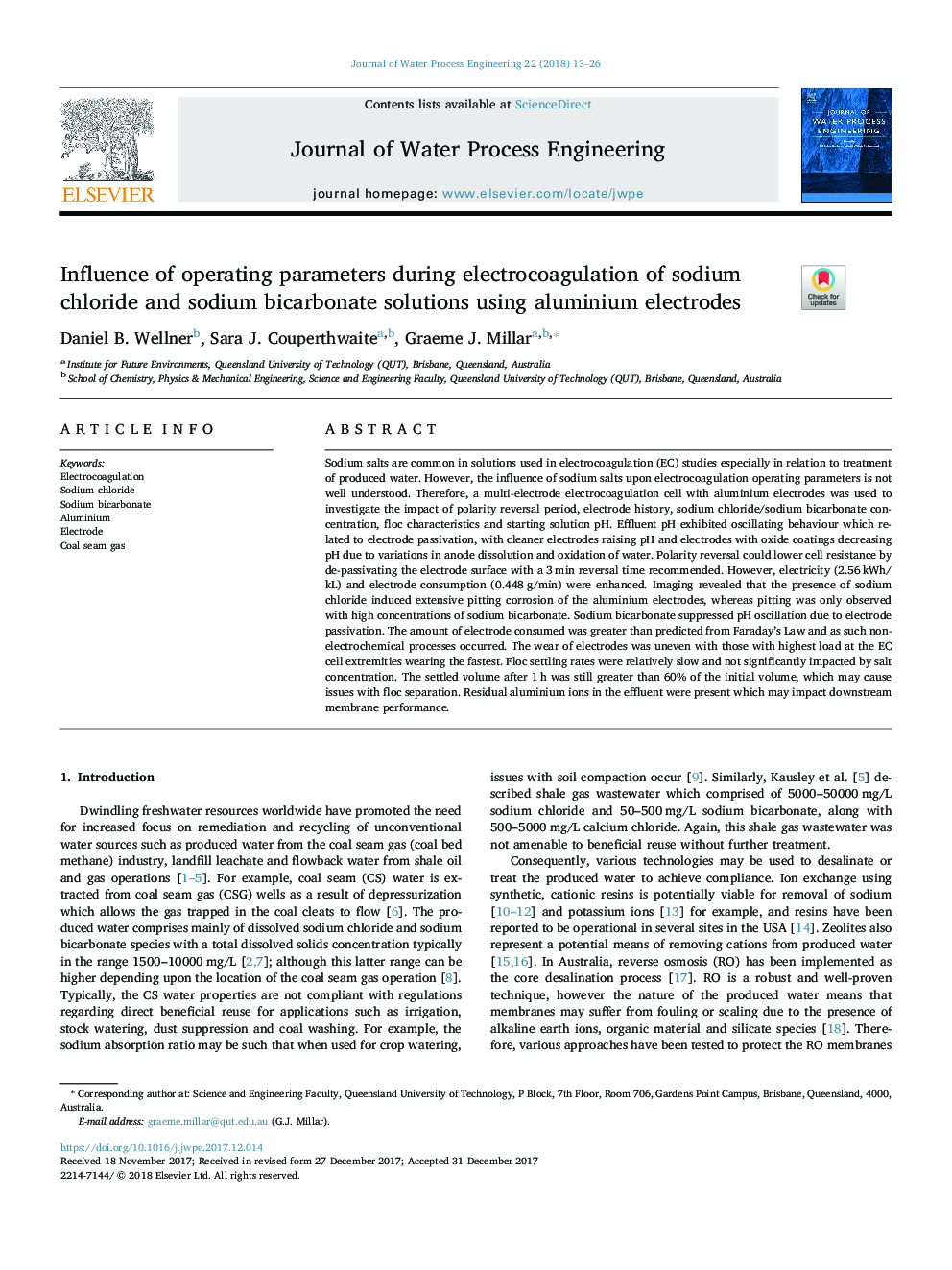| کد مقاله | کد نشریه | سال انتشار | مقاله انگلیسی | نسخه تمام متن |
|---|---|---|---|---|
| 6671937 | 1427550 | 2018 | 14 صفحه PDF | دانلود رایگان |
عنوان انگلیسی مقاله ISI
Influence of operating parameters during electrocoagulation of sodium chloride and sodium bicarbonate solutions using aluminium electrodes
ترجمه فارسی عنوان
تأثیر پارامترهای عملکرد الکتریکی در الکتروکواگولاسیون محلول های محلول سدیم کلرید و سدیم بی کربنات با استفاده از الکترودهای آلومینیوم
دانلود مقاله + سفارش ترجمه
دانلود مقاله ISI انگلیسی
رایگان برای ایرانیان
کلمات کلیدی
الکترو کلاژن، سدیم کلرید، سدیم بیکربنات، آلومینیوم، الکترود، گاز زغال سنگ،
موضوعات مرتبط
مهندسی و علوم پایه
مهندسی شیمی
مهندسی شیمی (عمومی)
چکیده انگلیسی
Sodium salts are common in solutions used in electrocoagulation (EC) studies especially in relation to treatment of produced water. However, the influence of sodium salts upon electrocoagulation operating parameters is not well understood. Therefore, a multi-electrode electrocoagulation cell with aluminium electrodes was used to investigate the impact of polarity reversal period, electrode history, sodium chloride/sodium bicarbonate concentration, floc characteristics and starting solution pH. Effluent pH exhibited oscillating behaviour which related to electrode passivation, with cleaner electrodes raising pH and electrodes with oxide coatings decreasing pH due to variations in anode dissolution and oxidation of water. Polarity reversal could lower cell resistance by de-passivating the electrode surface with a 3â¯min reversal time recommended. However, electricity (2.56â¯kWh/kL) and electrode consumption (0.448â¯g/min) were enhanced. Imaging revealed that the presence of sodium chloride induced extensive pitting corrosion of the aluminium electrodes, whereas pitting was only observed with high concentrations of sodium bicarbonate. Sodium bicarbonate suppressed pH oscillation due to electrode passivation. The amount of electrode consumed was greater than predicted from Faraday's Law and as such non-electrochemical processes occurred. The wear of electrodes was uneven with those with highest load at the EC cell extremities wearing the fastest. Floc settling rates were relatively slow and not significantly impacted by salt concentration. The settled volume after 1â¯h was still greater than 60% of the initial volume, which may cause issues with floc separation. Residual aluminium ions in the effluent were present which may impact downstream membrane performance.
ناشر
Database: Elsevier - ScienceDirect (ساینس دایرکت)
Journal: Journal of Water Process Engineering - Volume 22, April 2018, Pages 13-26
Journal: Journal of Water Process Engineering - Volume 22, April 2018, Pages 13-26
نویسندگان
Daniel B. Wellner, Sara J. Couperthwaite, Graeme J. Millar,
